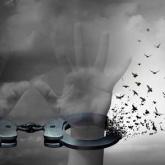Article

The rebirth of psychedelic psychiatry
- Author:
- Brian Holoyda, MD, MPH, MBA
Recent research suggests psychedelic agents might help treat anxiety, depression, other disorders
Article

Caring for patients on probation or parole
- Author:
- Brian Holoyda, MD, MPH, MBA
- Jackie Landess, MD, JD
Promoting stability in the community can reduce recidivism and re-incarceration.
